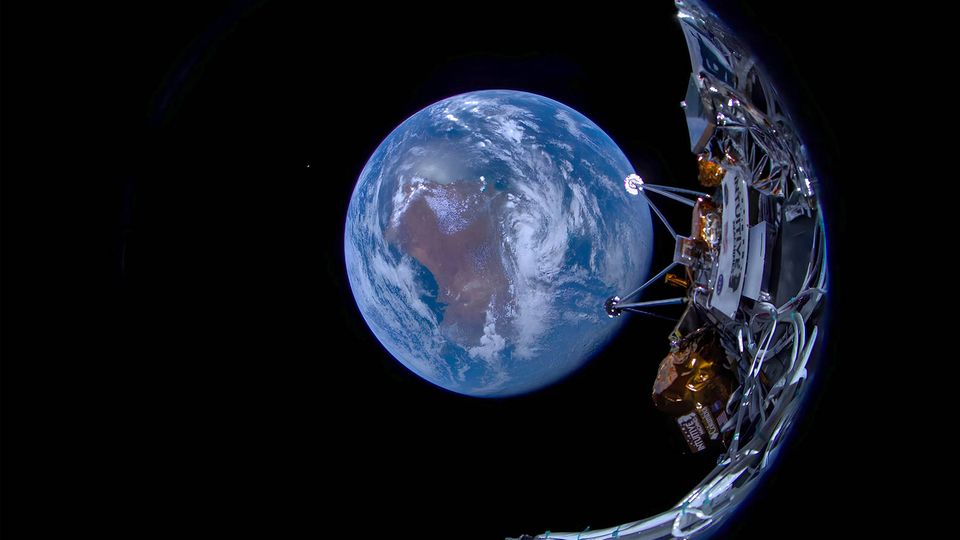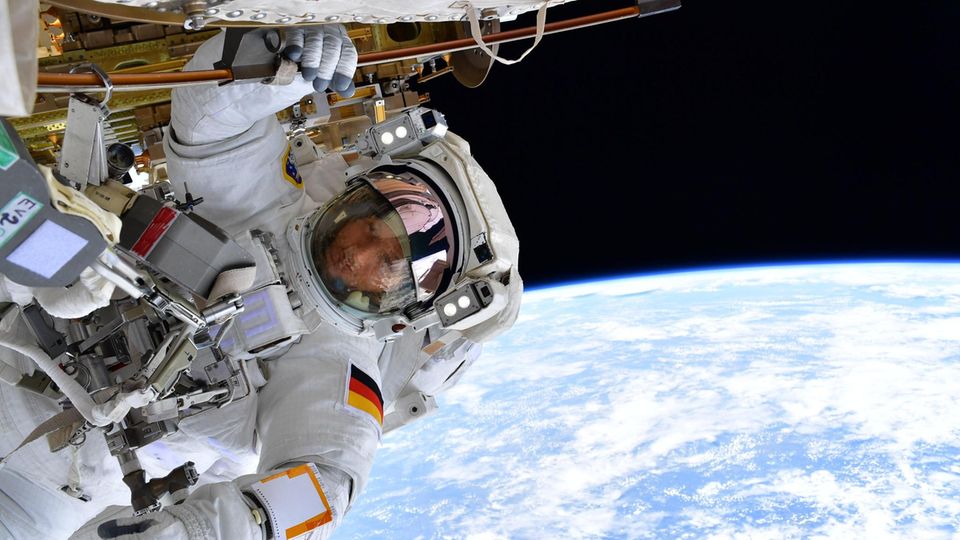space
Mishap during moon landing: Odysseus probe apparently tipped over
This image provided by Intuitive Machines shows the Odysseus lunar module over the near side of the moon after entering lunar orbit on Wednesday
© Intuitive Machines via AP / DPA
Getting to the moon was one challenge – landing on Earth’s satellite was another. Apparently a rock was in the way when it came into contact with the surface – and now the Odysseus is lying on its side. This makes contact with the probe much more difficult.
According to initial findings, the commercial US lunar lander Odysseus apparently tipped over during its landing and remained on its side. His company assumes that Odysseus got stuck on a rock during landing and fell onto its side, said Steve Altemus, head of the private space company Intuitive Machines, at a press conference on Friday. Previous information stated that the four meter high Probe standing upright was based on misinterpretation of data.
The lunar probe Odysseus is running
Despite lying on his side, Odysseus receives electricity from his solar panels, emphasized Altemus. The planned scientific experiments on behalf of the US space agency NASA could possibly still be carried out. Engineers hope a NASA probe can take photos of Odysseus this weekend to determine its exact location.
Odysseus landed on the moon on Thursday. It was the first US moon landing since the end of the Apollo program more than 50 years ago and the first landing of a commercial probe ever.
In the lunar crater Malapert A, which is 300 kilometers from the south pole of the moon, the probe will carry out temperature and radiation measurements as well as soil investigations for a week. The aim of the mission called IM-1 is to research the requirements for manned lunar missions in the area. NASA wants to bring astronauts to the moon in 2026 with its Artemis program.
Contact with lunar probe limited
According to company boss Altemus, Odysseus’ ability to send data to Earth is limited by his presumed side position. Its radio antennas apparently pointed towards the ground, making communication with Earth more difficult.
Odysseus has several NASA devices on board, including cameras that, among other things, are intended to examine changes in the ground caused by the dust raised during landing. NASA paid Intuitive Machines $118 million (almost €109 million) for the transport. The mission is scheduled to last seven days.
NASA promotes lunar flights by private companies in order to later use them for cargo flights. With their help, she also wants to equip the moon as a stopover for future manned flights to Mars. The South Pole is a candidate for a base camp on the moon because its ice could potentially be used to produce drinking water and rocket fuel.



